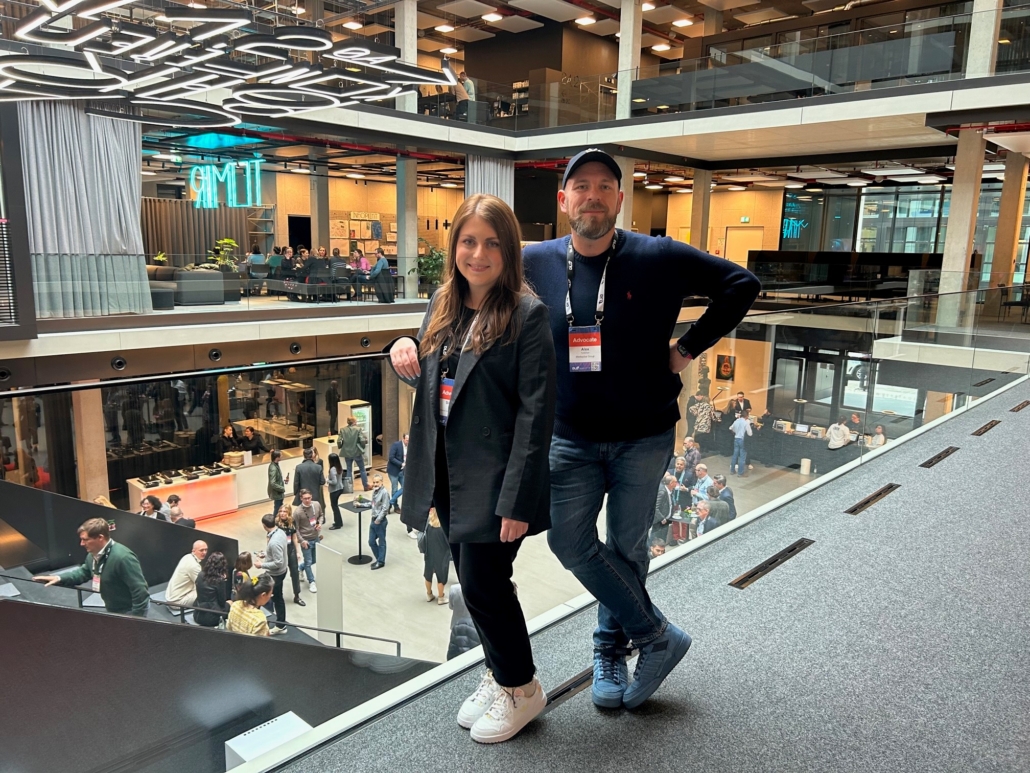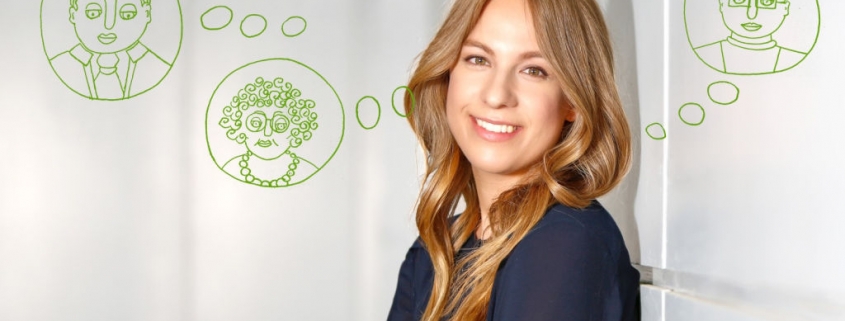The old year is drawing to a close. It’s time, therefore, to take a look at the coming year. The experts of the Serviceplan Group have summarised their personal communication trends for the year 2017.
Dr Peter Haller, Founder and Managing Director of the Serviceplan Group
Public discussion has adapted itself to a good dozen mega trends. They trigger business trends and these lead to consumer and communication trends. Those who want to develop faster than the economy as a whole have no choice but to follow the growth trends. But which ones?
There are hundreds of trends and counter-trends. All of this against the backdrop of an accelerating change in digitalisation. But which of these trends are relevant to which industries? Which can I embrace for my brand? And which of these in this confusing process is the reliable guidance for my brand management?
This is the theme of our 2017 Brand Roadshow together with GfK, which is once again sponsored by the German Trade Mark Association. “Dynamic brand management through the jungle of consumer and communication trends” will take place on 7 March in Munich, 9 March in Berlin, 22 March in Frankfurt, 28 March in Cologne, 30 March in Hamburg, 9 May in Vienna and 11 May in Zurich.
Jens Barczewski, Deputy Managing Director Mediaplus Strategic Insights
2017 will be the year inflationary KPIs become the measurement of success for campaign and media performance. In 2017 there will be an agreement between AGF (the television research working group in Germany) and Google/Youtube over the designation of a common video currency. The ‘Quality Initiative for Research into the Effect of Advertising’, driven by the Organisation of Brand Advertisers (OWM) in cooperation with Facebook and Google, will deepen its work and define the first indicators. The AGOF will firstly designate reach on a daily basis and therefore facilitate a continuous improvement of the booking units.
With the associations’ initiatives the individual publishers will open up their own measurement and success indicators to customers and agencies in order to obtain greater transparency in the market. The commotion over the erroneous increase in video viewing times on Facebook showed that not every KPI should be accepted without deep understanding from the customers and agencies.
Winfried Bergmann, Head of Human Resources, Serviceplan Group
Political correctness is on the retreat
Overly cautious political correctness has definitively disqualified itself as being the spiritual leader towards populism. The US presidential election was marked by dishonesty – from both sides. You did not know what was worse – the evident lies from the one side or the awkward, fearful avoidance and concealment of highly relevant issues from the other. Someone who conceals topics, about which large portions of the public worry, because of an alleged sense of decency and misunderstood consideration, must not be surprised when the sovereignty of interpretation is lost in societal discourse. This is even more so in Europe.
Therefore, dear reputable conservatives, break free from political correctness and in the coming year engage strongly in your issues. Let us argue about all of that – from the centre of society, which would then have found the courage for free debate once more. For when we do it like this, there will be nothing more for populists to do other than peep out from the right side of the screen. And it will be lonesome again and they will go back to their crossword.
Stephan Enders, Head of Mobile Marketing of the Plan.Net Group
Chatbots
With the first bot shops among messengers the subject flared up in 2016. And, as it often happens when a new trend emerges, a euphoric, partly activist test phase was swiftly launched, sometimes even when the worth and meaning of a certain discovery could not be estimated. However, chatbots are merely the cherry on top of an older idea, whose impact stretches far wider than it looks at first sight. It’s all about the perfect customer dialogue.
Chatbots, together with artificial intelligence, are (or, rather, will be) a valuable instrument, perhaps the most valuable of them all. Because the trend of 2016 will be the mega trend of 2017, meaning that it will pool together different mechanics, half trends and instruments:
01 CRM: Customer service with a chatbot, whose reaction is always quick and precise.
02 BIG DATA: Only learning chatbots, with all customer data at hand, will be able to unfold their power. The evolution of chatbots will enforce Big Data processes.
03 MOBILE FIRST: Chatbots are perfect for mobile use and, therefore, ideally fit for the future – wherever the user might decide to roll: Facebook, (mobile) web, you name it.
04 SERVICELAYER: In a world of information overload, it will be vital to deliver the right information, at the right time, in the right place. Nothing more, nothing less. A chatbot will be able to do just that.
Gerd Güldenast & Marcus Person, Managing Directors at hmmh
Voice control
Google Home and Amazon Echo open up new possibilities, however still clearly show us their limits . 2017 is the year the merits of the products and services will be demonstrated convincingly without a graphical user interface. Creative individuals and developers are asked to smarten these systems and to further develop companions for everyday life or for an intelligent touchpoint in connected commerce.
Big data aids human customer service
The topic of customer service in the online world stands to change in 2017. Today chatbots are being used more commonly. They show however shortcomings where subjective feelings and emotions play a crucial role. With new customer intelligence systems and smart chatbots based on big data analysis, customers will receive a completely new quality of service in 2017.
Oliver Grüttemeier, Managing Director of Serviceplan Cologne
Digitalisation only succeeds with empathy.
For years, we have experienced dramatic changes in the workplace through technological developments. Although companies attempt to increasingly fuse their processes along the supply chain, the digitalisation often only comes along sluggishly. 2017 will change that, because the top management currently recognises that leadership through ‘command and control’ no longer works. In the future, executives managers of successful companies will therefore be measured less by their accomplished goals, but rather much more by their social competence—the foundation for every form of cross-departmental collaboration.
In this area, Google is already 10 years ahead. Since 2007, Google already offers its employees the opportunity for personal growth and the development of business empathy with the program ‘Search Inside Yourself’. The success of Google is not only based on the accumulation of more data, but on the knowledge that the best search engine is our spirit.
Stefanie Krebs, Managing Director of Plan.Net Technology
In 2017 a creative thinker requires analytically and technically broad shoulders. While the mega trend digitalisation advances rapidly, the majority of companies have reacted and digitalised their structures. Now, together with their associates, they are facing the challenge of building an integrated business model from the emerging digital island which can also exist in a future shaped by big data, machine learning, the internet of things and perpetual digital innovation.
Those who want to deliver creative responses and celebrate communicative success must be able to develop organisationally and technically complex systems in a short amount of time. 2017 will therefore be the year of the creative team player, where it pays to deliver elegant solutions to complex questions using the input from your multi-faceted team with specialists for tools, technology, processes and people. It is no longer about the colourful façade, but the whole package.
Andrea Malgara, Managing Director of the Mediaplus Group
TV works
According to the ARF (Advertising Research Foundation) TV is still the most important advertising medium when it comes to building a broad reach and increasing return on investment. E-commerce companies are investing more and more in TV advertising. In 2015 almost every third TV advertising spot was occupied by an e-commerce product. TV advertising is strongly increasing online shopping traffic. Digital business models require a wide reach, however, to generate significant turnover.
If the appropriate special interest channels are chosen and screen planning is optimal for an advertising campaign, the advertising recall, brand awareness and the conversion rate all significantly increase. Through brand-unique and innovative media strategy, we can achieve a 20 percent increase in turnover with a targeted media mix.
Kevin Proesel, Managing Director of Saint Elmo’s Berlin
In 2017, IOT (Internet of Things) and clever ideas are changing retail marketing.
We have observed that the classic sales funnel of companies is changing: through the technology shift and the increase in use of smartphones, customers themselves are becoming points of sales and points of information, because they are networked everywhere and can obtain information as well as provide information at any time. As a result of this, personalised and networked campaigns that are implemented close to consumers will be the most convincing in the future. In 2017, we will be seeing the first campaigns which will use networked Smart Buttons as marketing incentives in the Internet of Things.
‘Smart Button’? It sounds smart, and it is smart: in advanced retail campaigns, a branded button acts as a pivot point. It is not like the dash buttons on Amazon, which act purely as facilitators of a networked ordering process, but it is a starting point for a networked campaign storytelling, which unfolds once the customer connects their button to their smartphone—and once they press the Smart Button. Predefined processes now tell a story, which, through several chapters, leads the customer to more and more touch points of a company: always through the simple push of a button. In this way, a guided tour takes place from home to the retail department, which constantly further qualifies the customer and allows campaigns to be experienced fully networked. It is virtually engagement marketing par excellence, since it goes beyond only displaying content and includes the user directly: ‘2017? Press the button and see what happens.’
Dominik Schütte, Managing Director of Serviceplan Content Marketing
Content quality instead of quantity
In 2017, people will ultimately comprehend that the purpose of content marketing goes beyond simply selling. Therefore, companies will be more confident in finding narrative niches outside their brand. In the process, they will be astonished to find out that people actually have their own interests and that it is exactly through these interests that they can be reached and turned into customers. A win-win situation, for both companies and the people out there. Storytelling for the masses – yes, thank you. But make it qualitative, relevant and, please, don’t be annoying.
Klaus Schwab, Managing Director of the Plan.Net Group
I believe that 2017 will bring along two highlights:
First of all, it will be the year when voice command becomes widely adopted, meaning that digital services will be triggered through speech. And this will be the collapse of technical interfaces, such as displays and keyboards.
Secondly, we will witness companies developing platform strategies inside different branches. Namely, they will be more open to start-ups and work together, in order to facilitate their clients’ access to specific services within their own ecosystem.
Julian Simons, Managing Director of mediascale and PREX Programmatic Exchange
With the progressing digitalisation of the use of media, and even in most areas of life, the long known types of borders between offline and online advertising channels are beginning to blur. More and more advertising spaces are being digitalised, are therefore accessible via IP, and are going ‘online’. Subsequently, this also means that programmatic advertising will lead to an increased distribution and control of channels such as radio, out-of-home, and in the end, television. This will lead to big changes for the advertising market.
The tremendous opportunities of comprehensive control and of addressing someone individually are not without great challenges. Business models change and become more complex. Strategies and management logics that make it possible for the new complexity to be meaningful to use, have to be found to prevent campaigns from losing impact in an aimless atomisation. This change must always keep the interests of the user and their data protection concerns in mind, otherwise it will not be successful.
Klaus Weise, Managing Director of Serviceplan Public Relations
Digital enraged citizens are changing the world
Great Britain is to exit the EU, Donald Trump is moving into the White House. Who would have believed, last year, that any of it would happen? The two results are neither coincidences, nor singular political accidents. They are the beacon of a world quake that has just begun. The triggering force of that quake is the fear caused by a change in the world, brought along by digitalisation and globalisation. Similar fears have always existed, but today they are a million times amplified and multiplied through social media. Fuelled by shady hate speeches and sparkled by social bots and opinion robots, whose sole purpose is to rile up the crowds. In 2017, dealing with digital enraged citizens will be the main challenge of political parties, unions, companies and brands.









